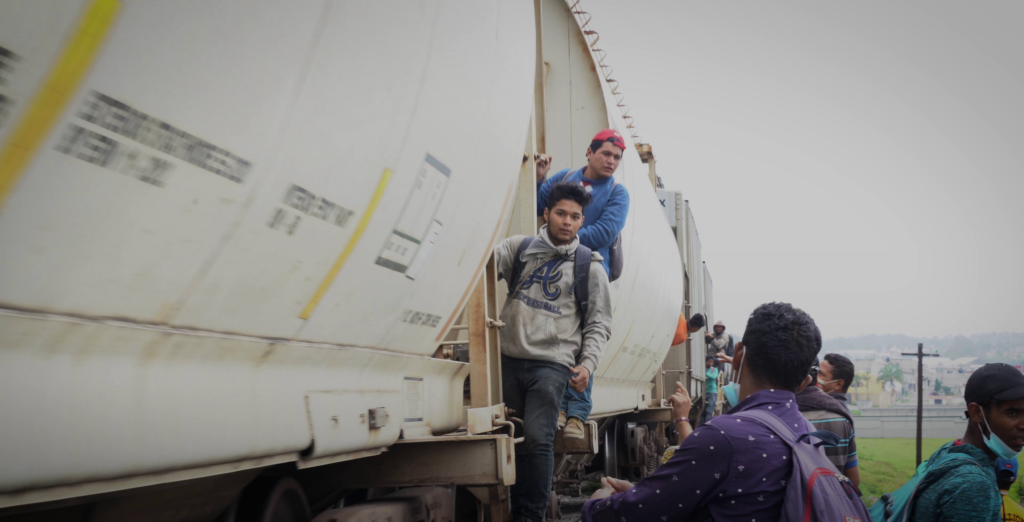To put a face and a story to the more than 500,000 people who risk their lives every year crossing Mexico to migrate to the United States.
This is the aim of the documentary “The other side of migration” that Ayuda en Acción, a member of Alliance2015, has launched in collaboration with the Basque Agency for Development Cooperation.
This documentary on migration portrays the human side behind the figures, giving a voice to those who suffer most in their transit and/or integration into the host society. They are specially women, unaccompanied minors, LGTBIQ+ people, entire families and elderly people who decide to migrate irregularly, escaping from situations such as poverty, violence, food insecurity or the effects of the climate crisis in their countries of origin.
The voices of migration in Mexico
The film features testimonies of migrant people during their transit or stay in the shelters where Ayuda en Acción works along the migratory route between Mexico and the United States. Mildre, Agustín and Jean Paul are some of the protagonists of the documentary:
Mildre Jaqueline González, Honduras:
“As migrants we are unaware that we are exposed to human trafficking. We are exposed to being sold to criminals, to mafias such as cartels.
Agustín Sarmiento, Argentina:
“You can be deported, many things can happen to you, but there is always an impulse that leads you to move again.
Jean Paul Cardona, Honduras:
“The migratory route is very dangerous because we are fixed business for organised crime. I always avoid talking to strangers, because they want to get information out of you”.
Migration in Mexico: an unprecedented humanitarian crisis
According to the International Organisation for Migration (IOM), Mexico is experiencing some of the most complex and rapidly evolving migration dynamics ever recorded in the country and in the entire Western hemisphere. Some facts about the humanitarian crisis the country is experiencing are:
- Nearly 700 people lost their lives trying to cross from Mexico into the United States in 2022. This land border has become the most dangerous in the world. Actually, the real number of deaths is likely to be higher due to the lack of official data, warns the IOM.
- It is estimated that between 3,000 and 6,000 people arrive daily in southern Mexico. The UN refugee agency (UNHCR) warns of the saturation of shelters and other reception spaces in the country.
- More than 2.2 million migrants arrived at the US southern border in 2023, according to data recorded between January and November of that year by US Customs and Border Protection.
- More than 10 0000 people participated in the last migrant caravan that crossed Mexico on its way to the US.
The work of Ayuda en Acción in Mexico
Ayuda en Acción operates in three migrant shelters located in Tenosique, Apizaco and Monterrey (south, centre and north of the country). These centres are located along the migration route that links Mexico with the United States following the railway network of the train known as La Bestia (The Beast). It constitutes one of the most insecure routes and also one of the most frequently used by those who migrate to the United States from countries such as Venezuela, Guatemala, Honduras and El Salvador.

La Sagrada Familia shelter; credits Ayuda en Acción 
La Bestia train; credits Ayuda en Acción
The key areas of intervention are: humanitarian protection, strengthening of shelters and humanitarian advocacy. Advocacy activities are also carried out to bring visibility to the situation of migrants, shelters and local organisations. Through actions such as this documentary on migration, the NGO seeks to provide testimony, report and reduce the vulnerability conditions of migrants and reinforce their dignity.
Alliance2015 will continue to work in Mexico and other vulnerable areas of the world to ensure safe and legal migration channels, focusing on protecting women and girls.
Join us in addressing the challenges and advocating for comprehensive solutions.


